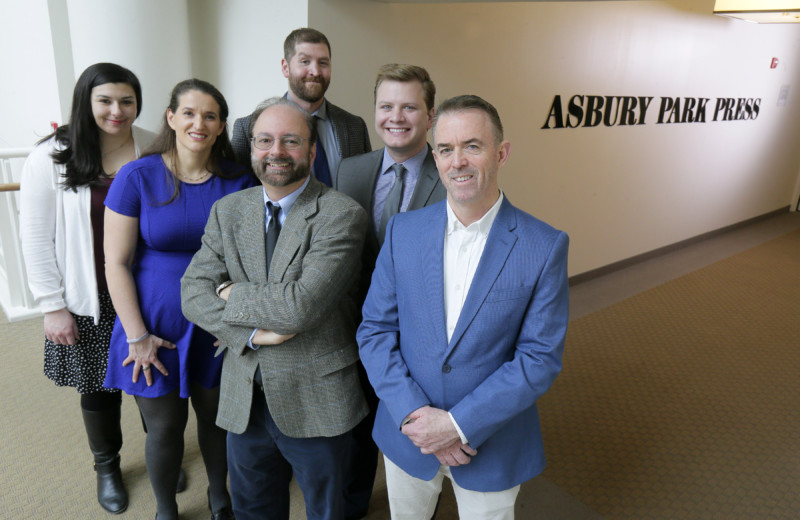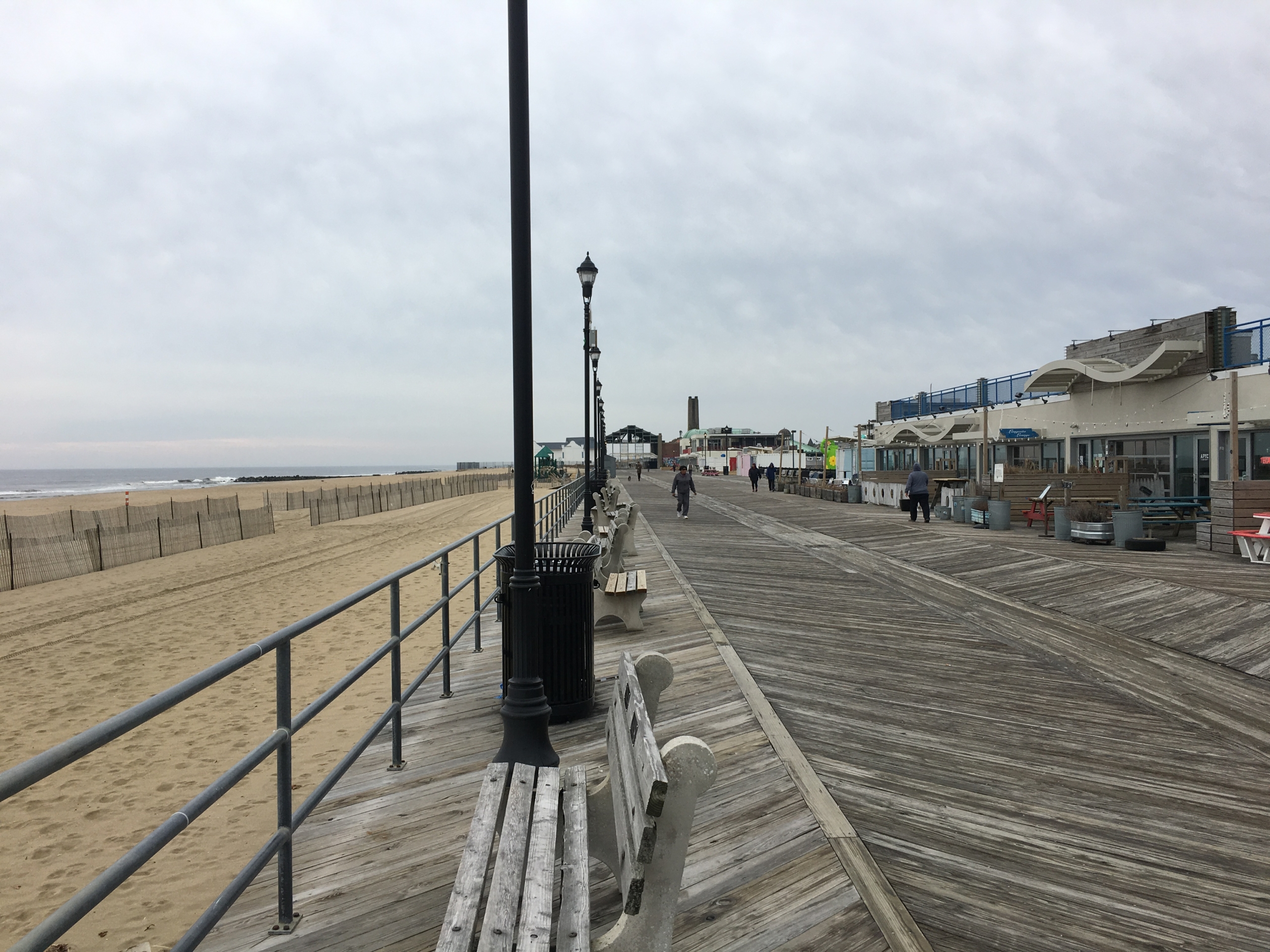“THE SHIELD,” an exhaustive, 19-part investigation of police corruption in New Jersey, isn’t the kind of series you’d expect from a small, relatively under-resourced newspaper like the Asbury Park Press. The exposé, which revealed that municipalities across the state had collectively spent about $43 million in taxpayer money to cover up the brutal actions of rogue cops, took two years to complete. Reporters, who combed through 30,000 pages of documents obtained via public records requests, were pulled from their daily beats for months at a time in order to focus exclusively on the investigation.
When it was published online in January, “The Shield” landed like a gut punch. Lawmakers on both sides of the aisle, perhaps taken off guard, announced that they would push for reform. But they couldn’t have been surprised that the Press would pants them. The broadsheet—the state’s third-largest newspaper, with a weekday circulation of 91,000—consistently hits above its weight, and often shapes state policy. The police investigation was no exception.
TRENDING: How hacked emails and a yacht in Monaco ended my career at WSJ
“It’s in character with what the Asbury Park Press has always been,” says Richard A. Lee, a journalism professor at St. Bonaventure University, whose research focuses on New Jersey media.
What’s surprising is that the Press, which mostly caters to the 1.2 million residents of Monmouth and Ocean Counties, manages to keep swinging, consistently publishing important public-service work during a time of local media contraction.
In December, for instance, the paper revealed that members of the Sinaloa Cartel, picked up after a fentanyl bust, were living in New Jersey. In early February, reporters found that a Lakewood rabbi had funnelled millions of dollars intended for low-income housing into luxury development. “Renter Hell,” a five-part investigation of the state’s squalid housing conditions published by the Press last year, was recently named a finalist for Harvard’s estimable Goldsmith Prize, to be announced Tuesday, March 6.

The Asbury Park Press team behind “The Shield.” From left: Kala Kachmar, Susanne Cervenka, Alex Gecan, Paul D’Ambrosio, Andrew Ford and Ken Serrano. Photo courtesy D’Ambrosio/Asbury Park Press.
THE PRESS HAS BLED nearly half its staff since 1997, when the paper was acquired by Gannett (which reported a net loss of $13.6 million for the fourth quarter of 2017), and now employs around 22 metro reporters. But Hollis R. Towns, the paper’s executive editor for the past 10 years, says he has never wavered in his commitment to investigative journalism and daily enterprise stories—which, he says, do particularly well online.
“It allows us to carve out a strong niche,” Towns says, “to focus on the stories that matter to the community.”
According to Towns, a few things have allowed the Press to continue on that path. In 2014, the newsroom underwent a major reorganization to align with the digital era, minimizing its print operation and bringing in young reporters from Gannett properties around the country. Towns, 53, says the paper is nimbler as a result, “doing fewer things better.”
ICYMI: Gannett and the last great local hope
Two years ago, Gannett bought the North Jersey Media Group, including the Bergen County Record, the state’s second-largest newspaper behind the Newark Star-Ledger. After the purchase, says Towns, who is also regional vice president of news for the Gannett New Jersey group, the Press pulled its statehouse reporters in to work on local investigative stories, relying on the Record’s coverage of state government for syndication.
But above all, Towns avers, the Press wouldn’t be able to do what it does without Paul D’Ambrosio, the paper’s 58-year-old director of news and investigations.
“I would put him up there as the best investigative journalist I’ve worked with,” Towns tells me.
There’s no two sides to corruption. When you find misdeeds, you advocate for change.
D’AMBROSIO IS THE INVISIBLE FORCE behind nearly every big public-service investigation the Press has published during at least the past two decades. D’Ambrosio has worked at the Press for 37 years, his entire journalistic career.
In that time, he’s earned a reputation as a data whiz; he launched the paper’s searchable public records site, DataUniverse, in 2006, and it has since raked in hundreds of millions of pageviews, making it Gannett’s most trafficked database.
In the 1980s, D’Ambrosio was at the forefront of computer-assisted reporting, analyzing government data to draw conclusions about systemic issues in the state.
“Honestly, I was kind of bored with the ‘he said, she said’ stories,” D’Ambrosio says in a phone interview. “You don’t really get anywhere with them.” But raw, incriminating information, presented in the right way, yielded results. “You essentially become an inspector general, saying, ‘We found this and you gotta fix it.’”
D’Ambrosio’s investigations have led to several policy changes. In the ’90s, he took on New Jersey’s opaque public information laws, which helped bring about the state’s Open Public Records Act. The act made his job a lot easier; a few years later, D’Ambrosio exposed legislative corruption in “Profiting From Public Service,” a series that sparked a number of ethics reforms.
In 2010, a series he edited and co-wrote on the state’s property taxes was a Pulitzer finalist for public service. D’Ambrosio considers it a failure that no policy changes came of it.
“We try to make sure that we don’t let the policymakers off the hook,” he says.
It’s a proactive approach that, D’Ambrosio is aware, veers quite close to the domain of an editorial writer. (Robert Bartley, who helmed The Wall Street Journal’s editorial page for decades, liked to say that “it takes 75 editorials to pass a law.”) But D’Ambrosio, who is an admirer of the former Philadelphia Inquirer editor Gene Roberts, doesn’t worry about that.
“There’s no two sides to corruption,” D’Ambrosio says. “When you find misdeeds, you advocate for change.”
Every big project, says D’Ambrosio, needs three components: a human element (for pathos), a new finding (preferably unearthed through public records requests) and a solution or two (for purposes of accountability).
AT THE PRESS, there is a special projects desk, but the operation is fluid and nobody in the newsroom is discouraged from going deep. Press reporters say D’Ambrosio and his institutional memory are invaluable resources as they navigate government documents.
Occasionally, of course, the reality of working at a newspaper in the 21st century sets in.
“We’re all forced to do more with less,” says Susanne Cervenka, a Press reporter who covers Monmouth County government and who worked on the police story. “Sometimes, as more stuff gets piled on our plate, it can be harder to find a way to access all that knowledge he’s got.”
For the rest of the year, D’Ambrosio says, the police project will be the paper’s main focus as he and his reporters push for legislative and policy changes (though a number of other investigations are also in the works). This approach is somewhat anomalous in journalism—especially, it seems, at Gannett, whose anodyne image isn’t often associated with watchdog journalism.
Plenty of newsrooms publish big series and then move on, but the Press takes an unusually aggressive—but well-tested—approach. The strategy is based on a template D’Ambrosio hammered out decades ago, when he learned that meaty investigations could bring reform. Every big project, he says, needs three components: a human element (for pathos), a new finding (preferably unearthed through public records requests) and a solution or two (for purposes of accountability). The paper also hosts public forums, starts online petitions and times its reports to appear just before elections, for maximum impact.
“We work on a 24-hour cycle, but the lawmakers work on a 24-month cycle,” D’Ambrosio says.
On a recent morning in mid-February, Andrew Ford—one of the lead reporters on “The Shield,” who came up from Gannett’s Florida Today during the reorganization in 2014—was working to expand the series, going through a few new documents he’d received through public records requests. One described an $800,000 whistleblower settlement in Cape May. Ford was preparing to pitch D’Ambrosio when I approached his desk.
“It caught my eye because it’s a lot of taxpayer money that’s being spent,” Ford told me.
On the wall at the front of the newsroom, which is located in a corporate office park just off Route 66 in Neptune, New Jersey, a mounted television displayed the site’s traffic numbers via Chartbeat. The top story, published that day, was a mid-level investigation of a local Little League team whose finances were in disarray, possibly because of theft. The next day, the league’s former president and treasurer were arrested.
ICYMI: Watchdog reporting in East St. Louis highlights potential in under-covered areas
Matthew Kassel is a freelance writer whose work has been published by The New York Times, The Wall Street Journal, and Slate.

